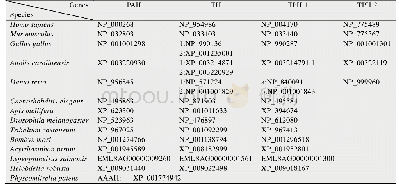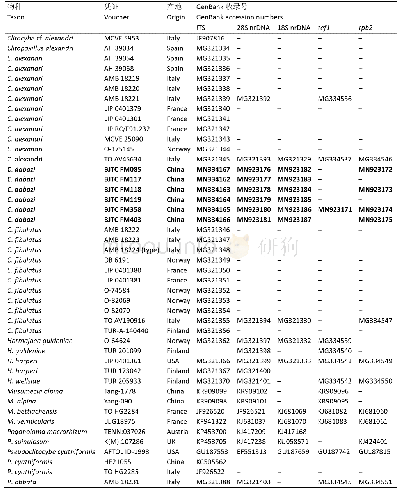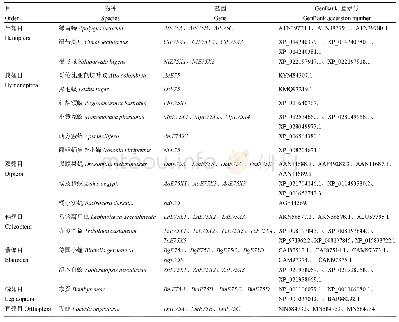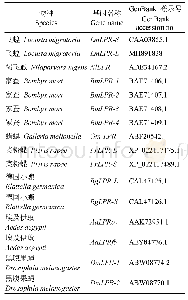《表3 本研究相关物种的PAH、TH、TRH蛋白GeneBank登录号》
 提示:宽带有限、当前游客访问压缩模式
提示:宽带有限、当前游客访问压缩模式
本系列图表出处文件名:随高清版一同展现
《家蚕色氨酸羟化酶(TRH)基因的克隆及表达特性分析(英文)》
To explore the phylogenetic relationship between members of AAAHs,we constructed a neighbor joining phylogenetic tree with 51 genes from 13species including 5 vertebrates[Homo sapiens,Mus musculus,Gallus gallus,Anolis carolinensis,Danio rerio]and 8 invertebrates[Tribolium castaneum(Coleoptera),Acyrthosiphon pisum(Hemiptera),D.melanogaster(Diptera),B.mori(Lepidoptera),Apis mellifera(Hymenoptera),Lepeophtheirus salmonis(Arthropoda,Crustacea),Helobdella robusta(Annelida,Clitellata)and Caenorhabditis elegans].The AAAH of physcomitrella,a lower plant,was used as an out-group;this protein was reported not only to have PAH function but also TH function and/or TRH function.All AAAHs clustered into three distinctclades,suggesting that the members of AAAH which likely derived from an ancestor differed in their structures and/or function[32].Moreover,the TRH clade was closer to the PAH clade than to the TH clade(Fig.5).The first clade was the TH clade,which included two subclades,the invertebrate TH subclade comprised insect TH as well as other invertebrate TH,which served as the out-group while the vertebrate TH subclade consisted of TH1 and TH2 groups.Second was the PAH clade where vertebrate PAH and insect PAH belonged to different categories,and other invertebrate PAH were the out-group.Third was the TRH clade comprised the invertebrate TRH subclade and vertebrate TPH subclade.The invertebrate TRH subclade contained insect TRH groups where silkworm clustered together with D.melanogaster and other invertebrate TRH.The vertebrate TPH subclade was divided into TPH1 and TPH2 groups,revealing the likely difference in functions between TPH1 and TPH2.Furthermore,TPH2 was mainly expressed in the brain stem,while TPH1 was expressed in the gut,pineal gland,spleen,and thymus in human,mouse and rat[20].Interestingly,TPH1 in Danio genome had two copies corresponding to gene duplication events that occurred specifically in teleost fish[33].
| 图表编号 | XD0040385000 严禁用于非法目的 |
|---|---|
| 绘制时间 | 2019.01.25 |
| 作者 | 李田、陈曦、李海银、王计英、孙伟、申琦、鲁成、陈萍 |
| 绘制单位 | 西南大学生物技术学院、西南大学生物技术学院、西南大学生物技术学院、西南大学生物技术学院、重庆大学生命科学学院、西南大学生物技术学院、西南大学家蚕基因组国家重点实验室、西南大学生物技术学院 |
| 更多格式 | 高清、无水印(增值服务) |





